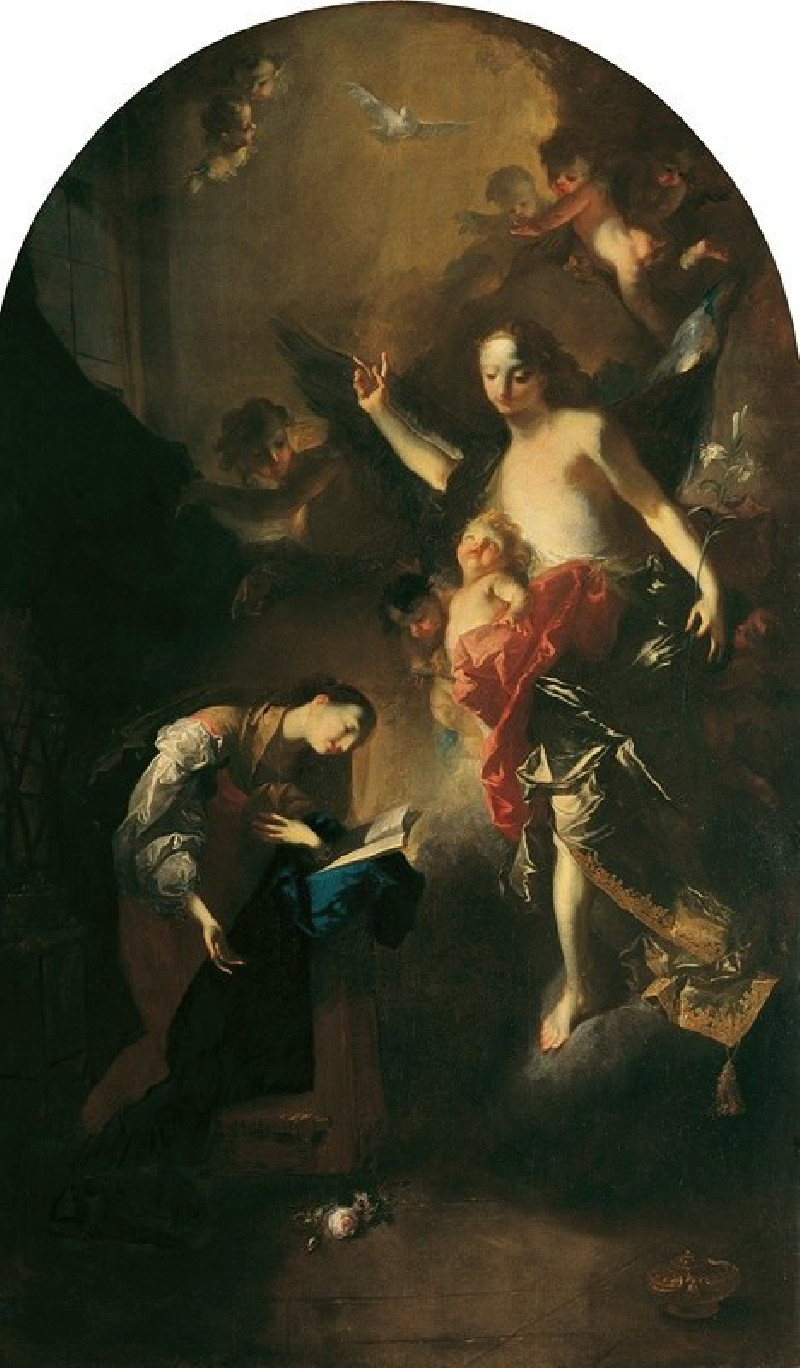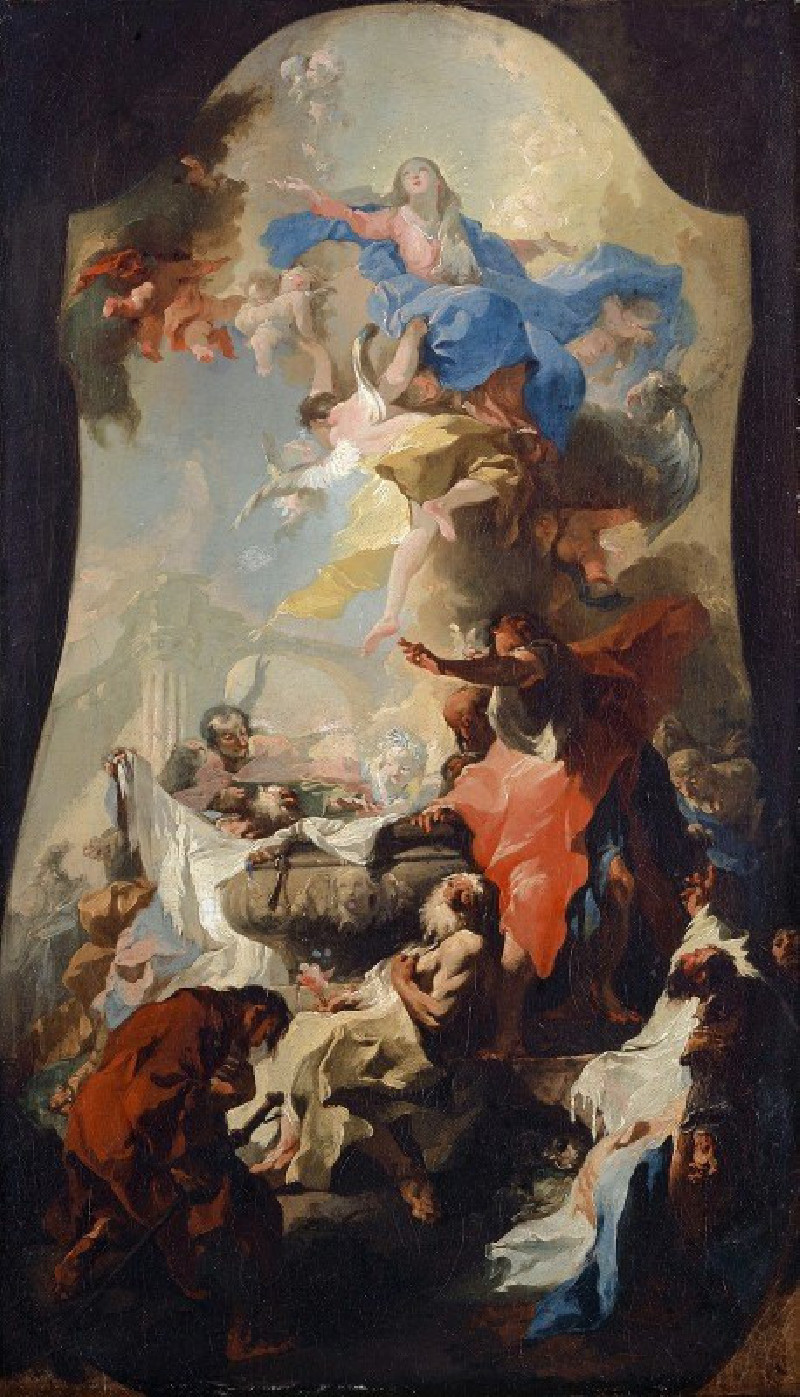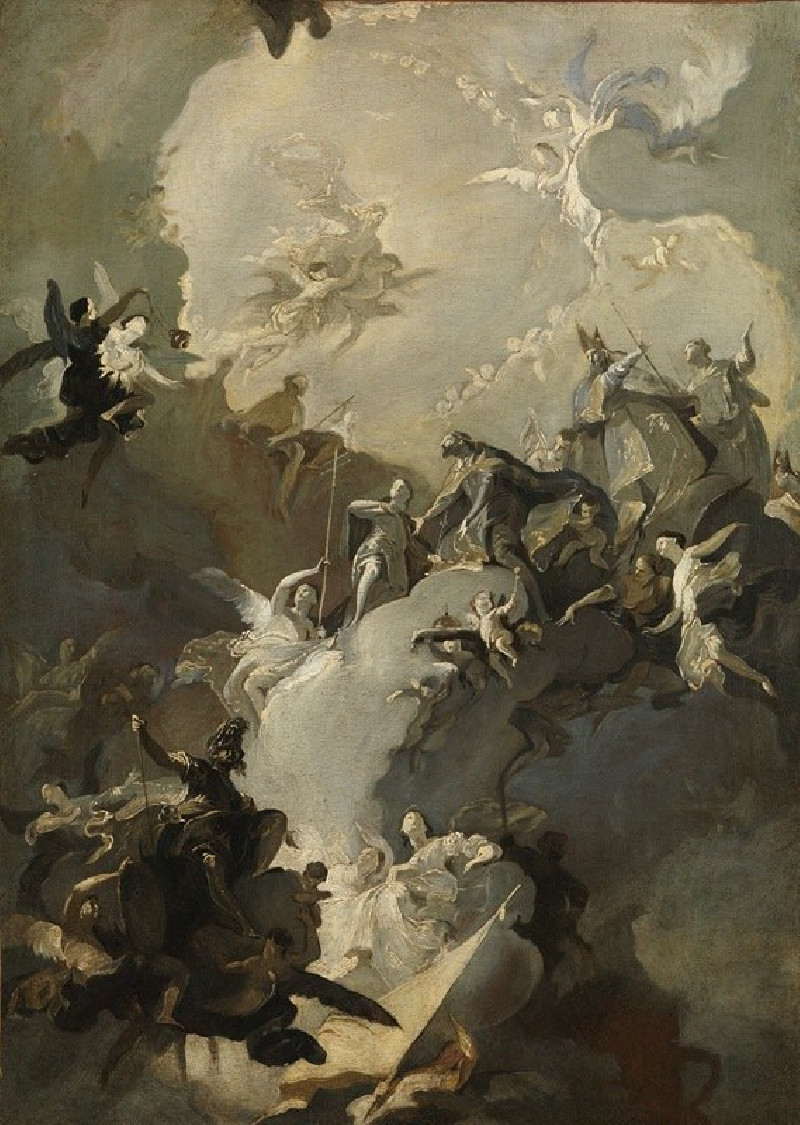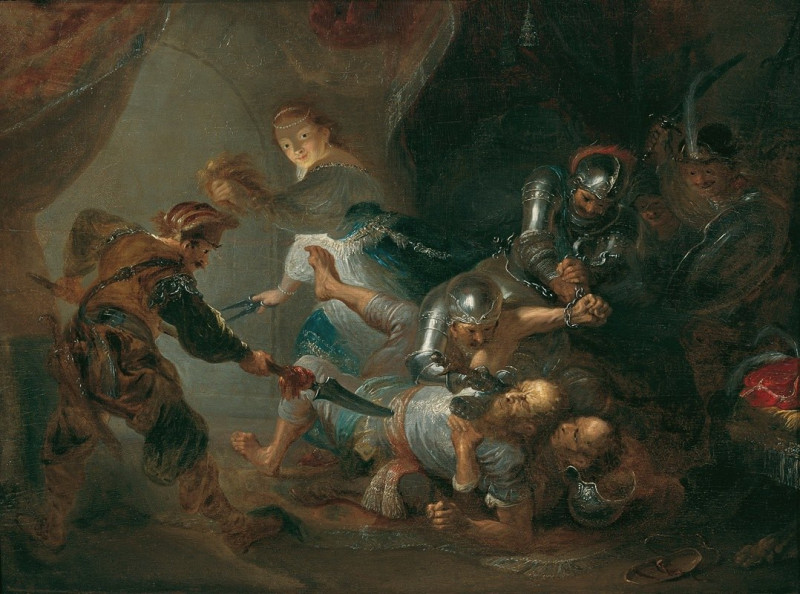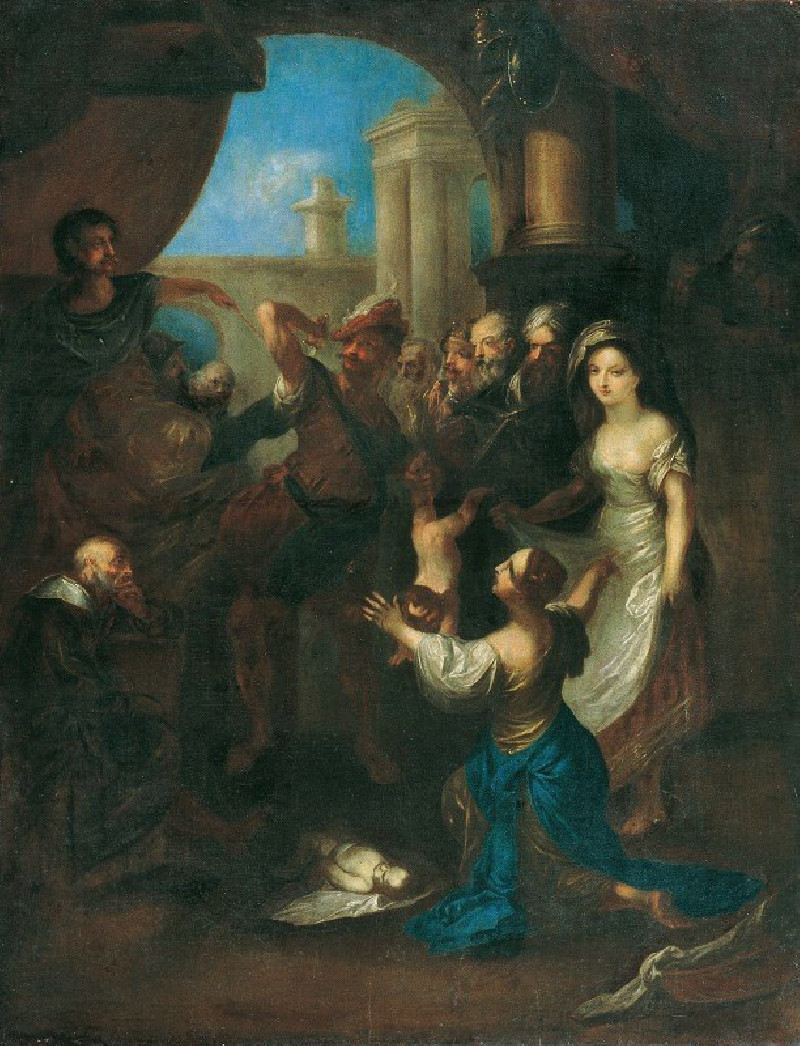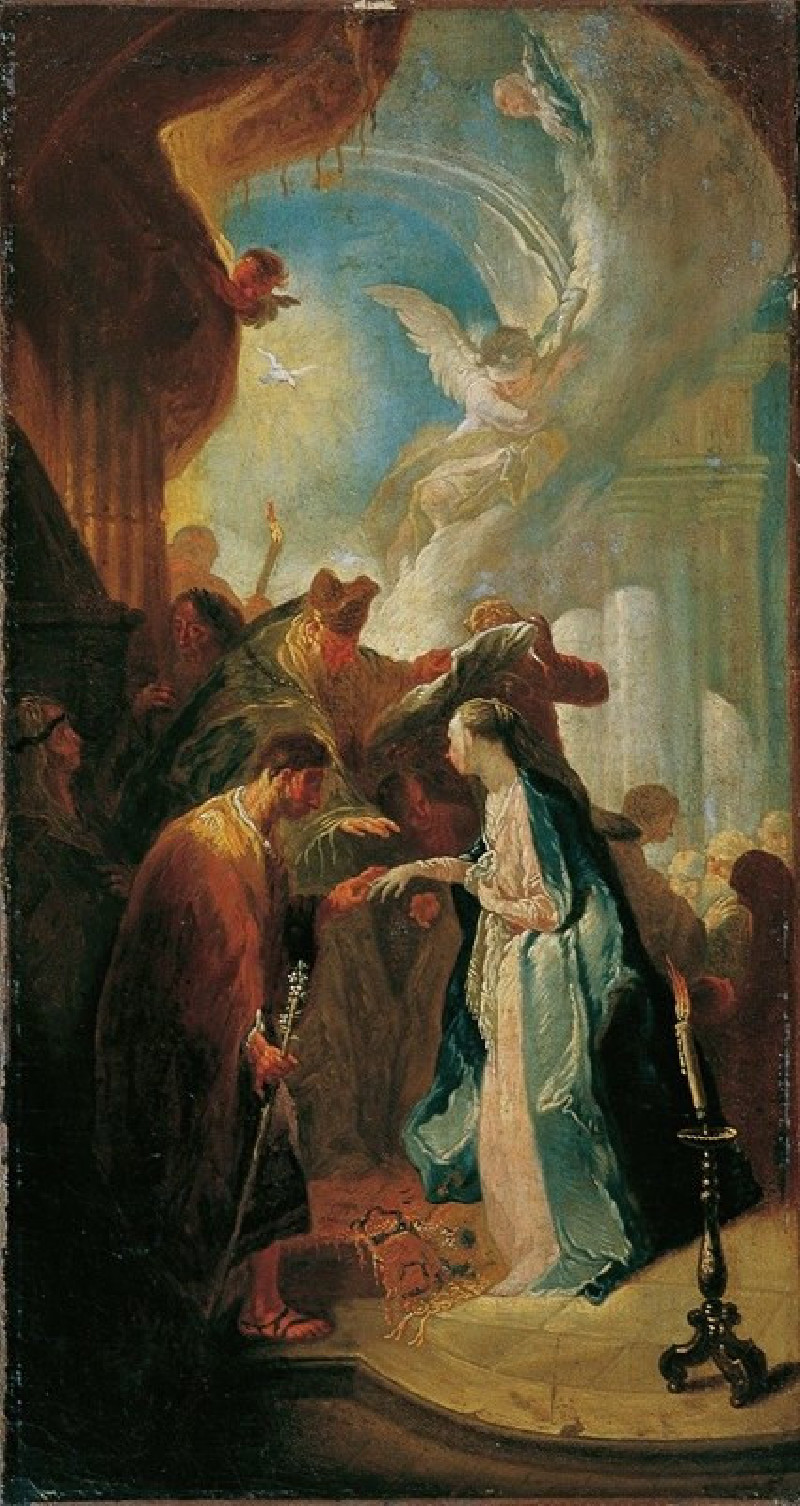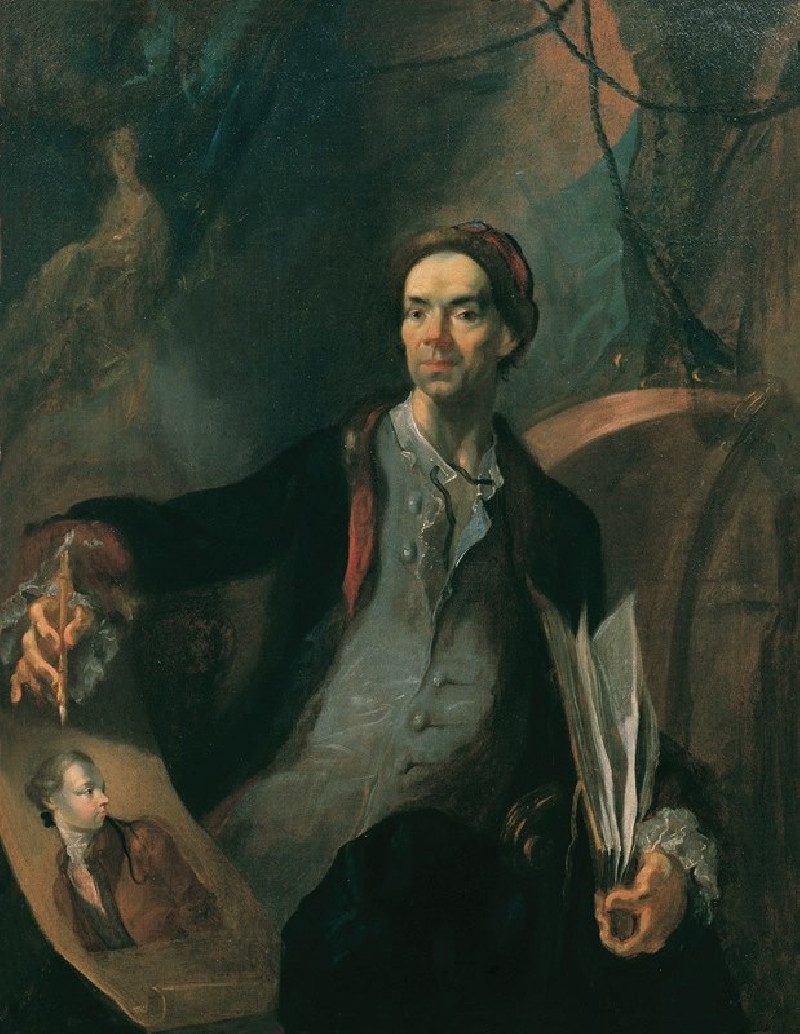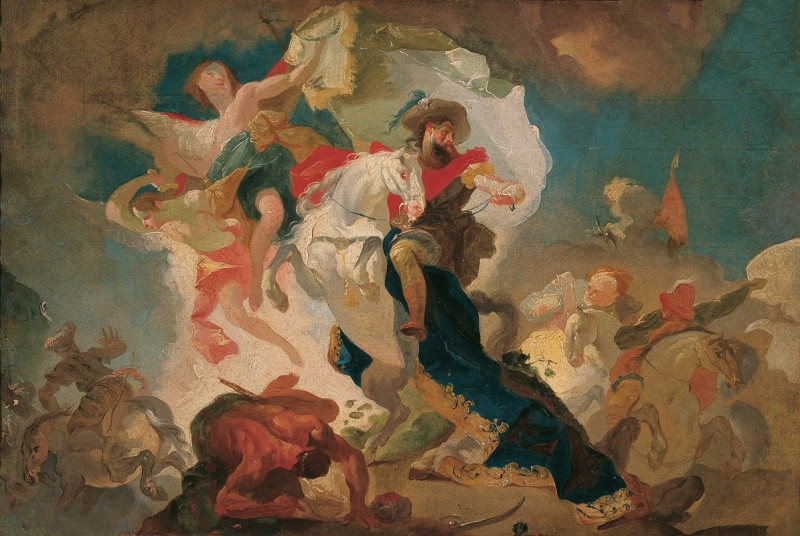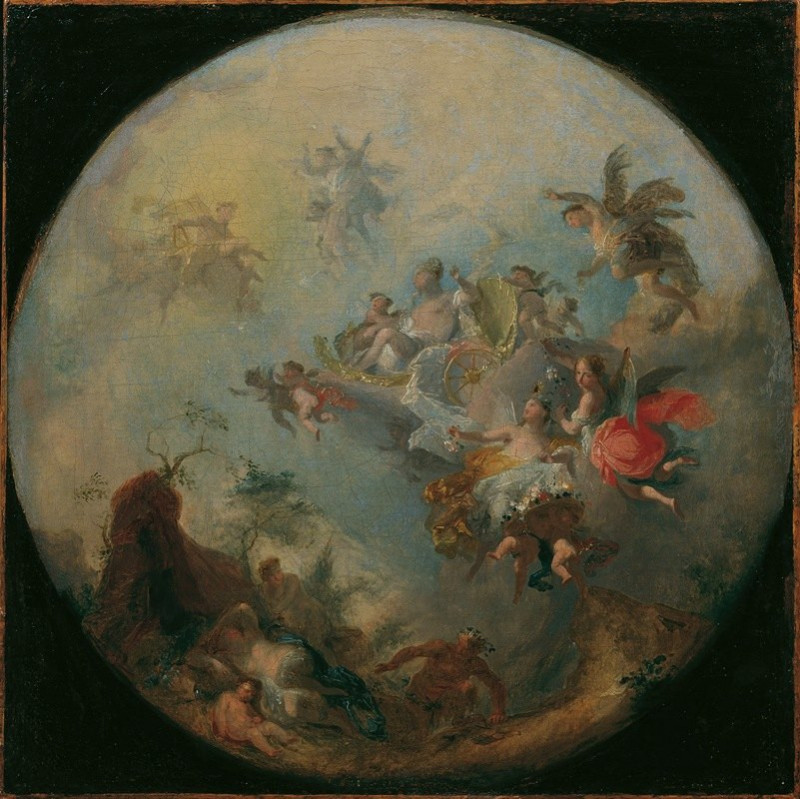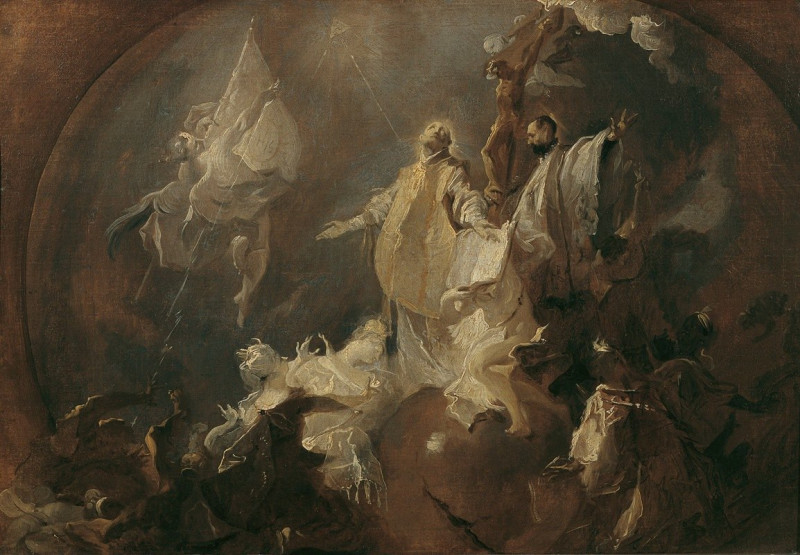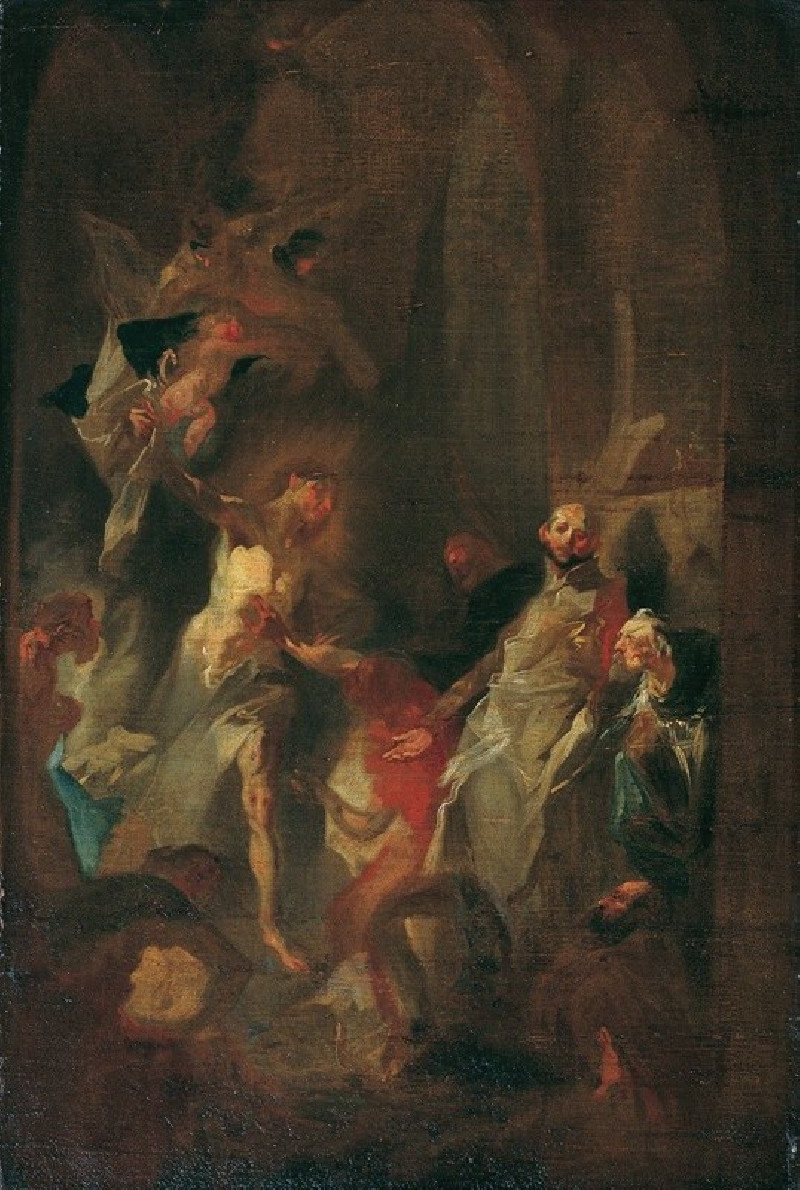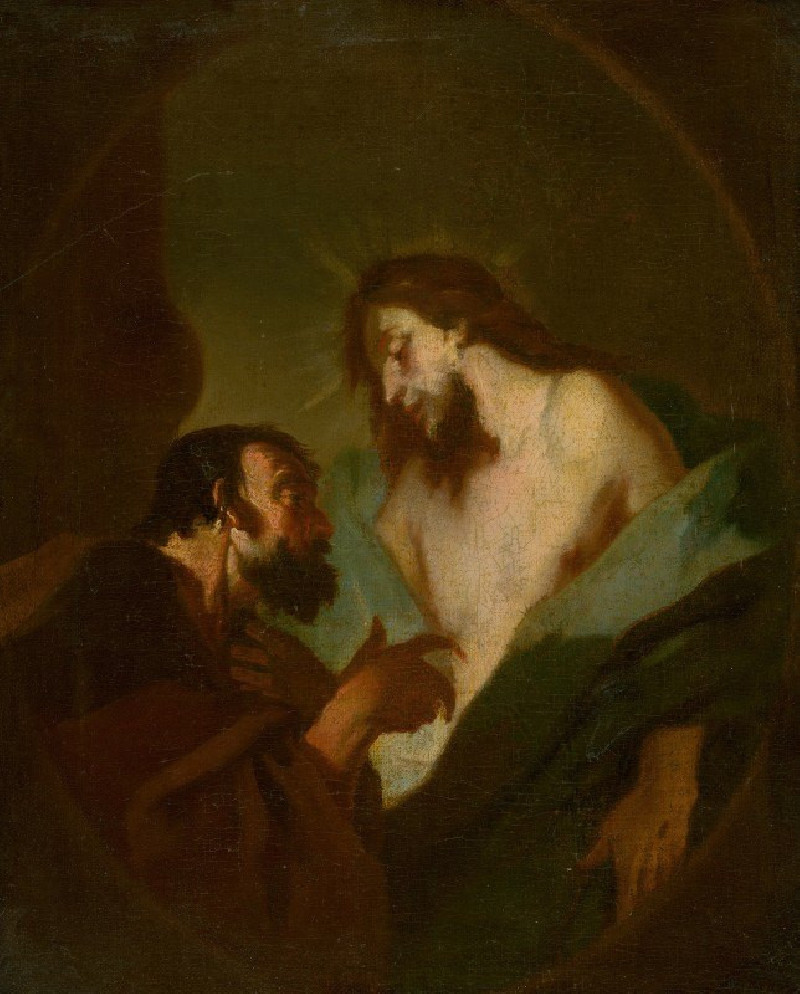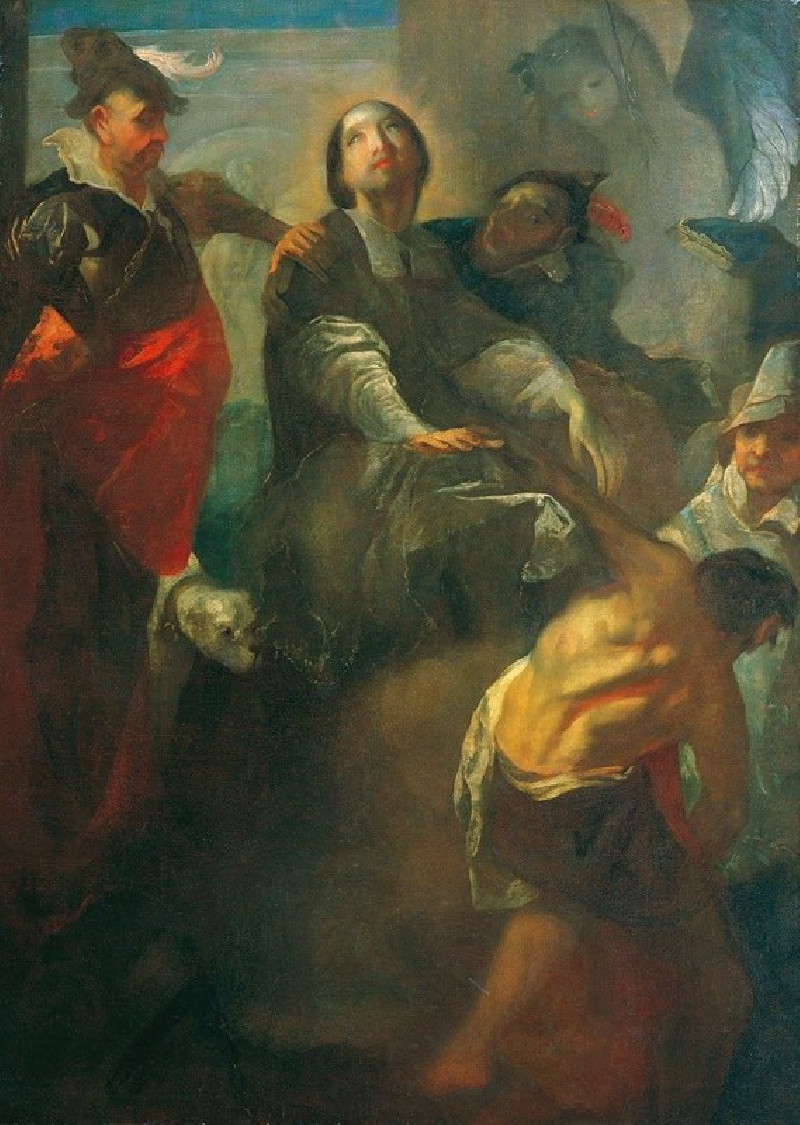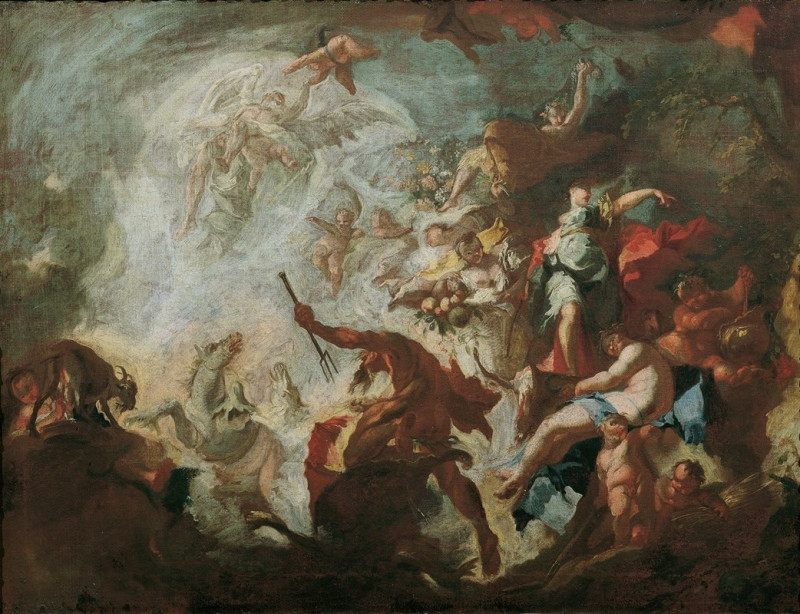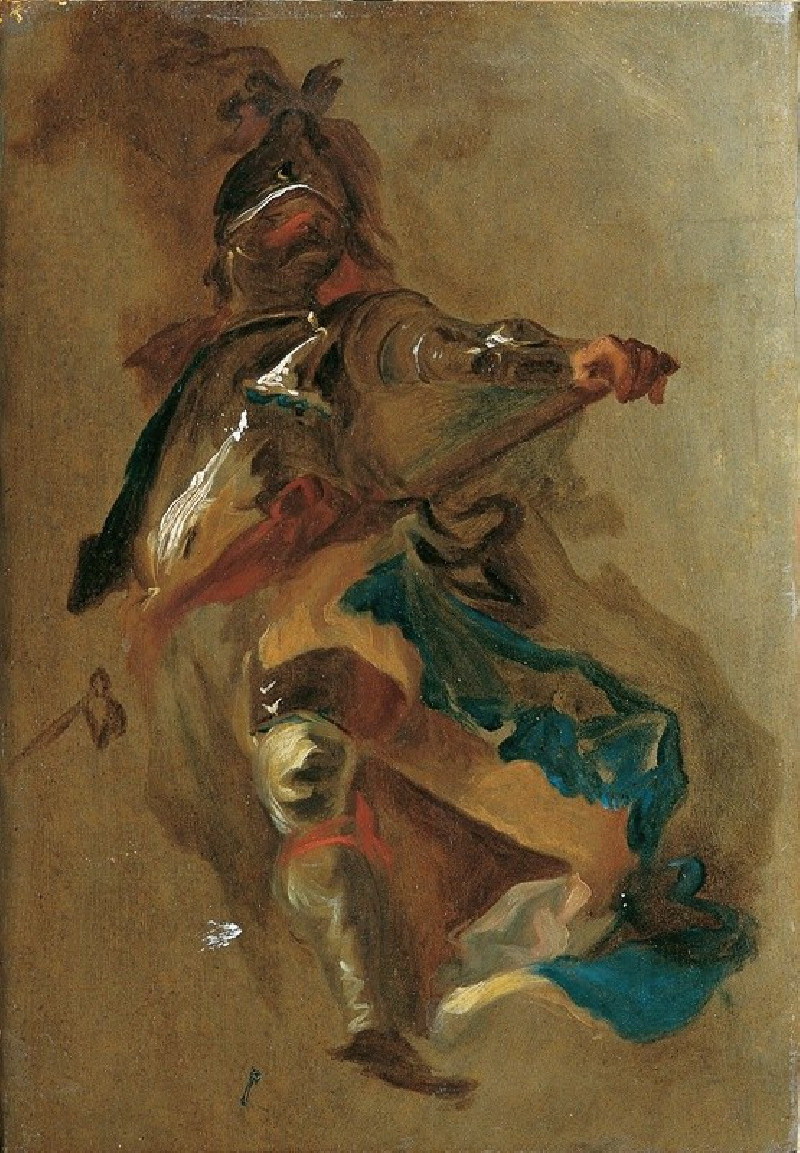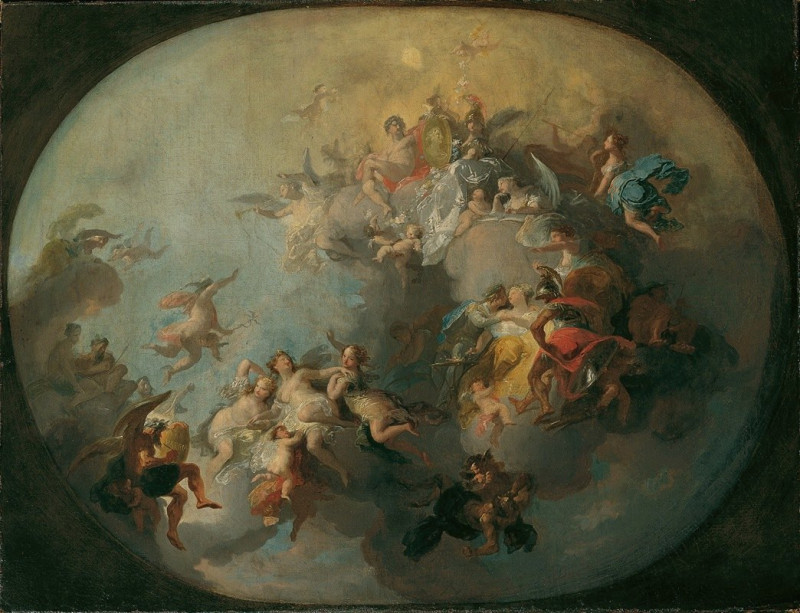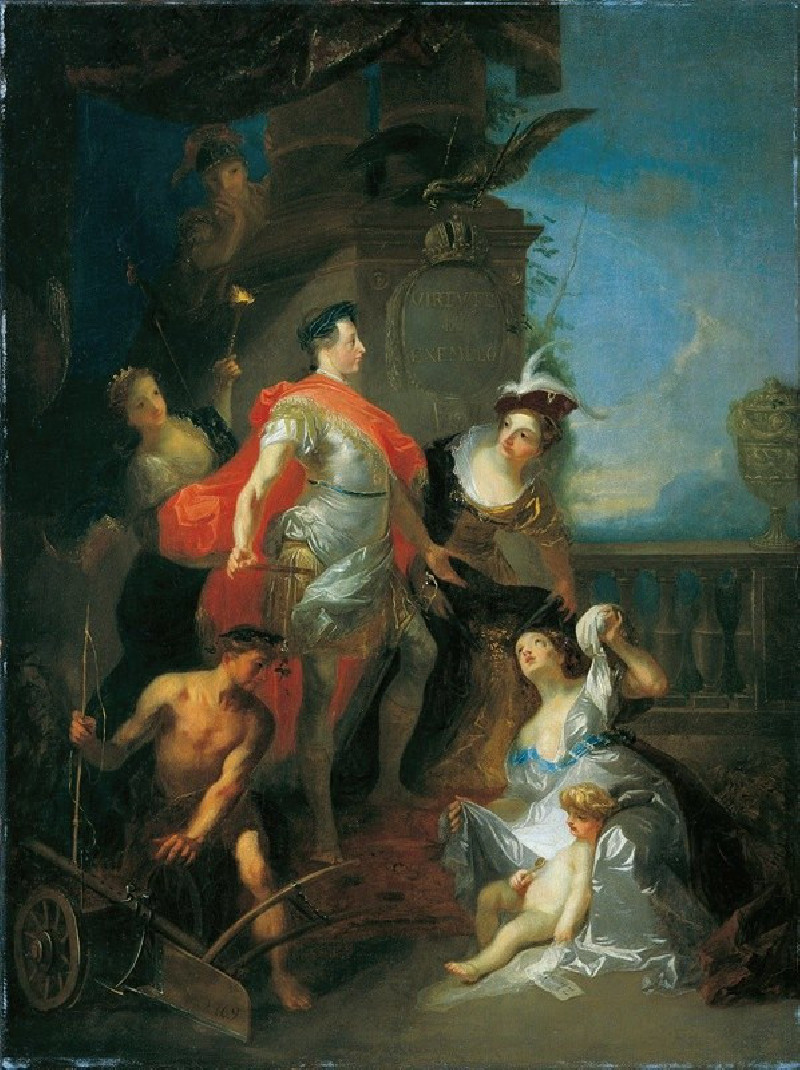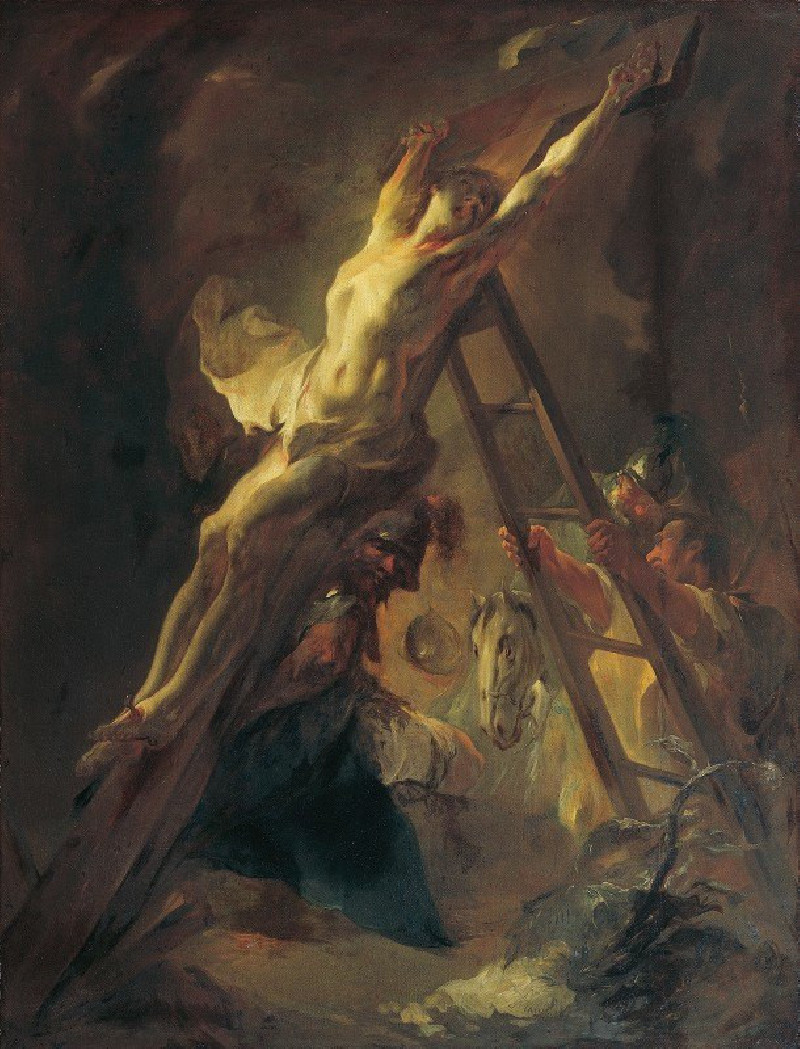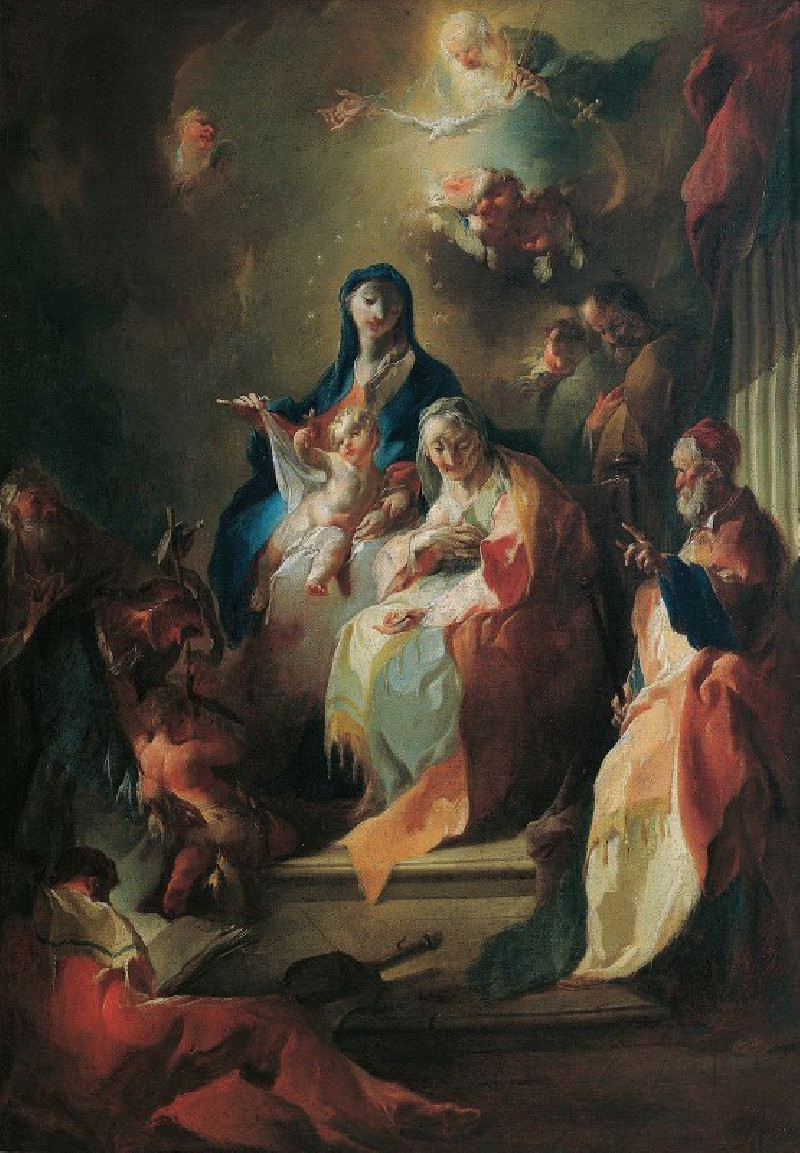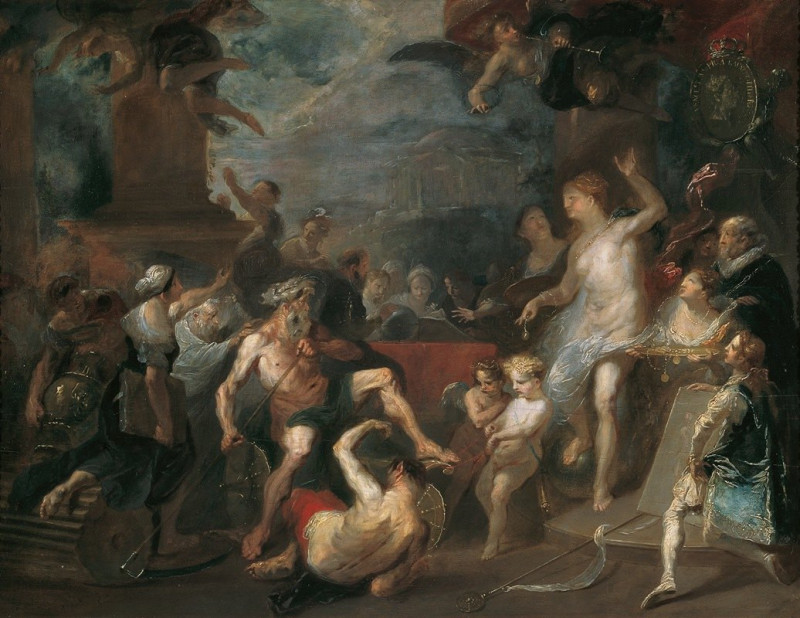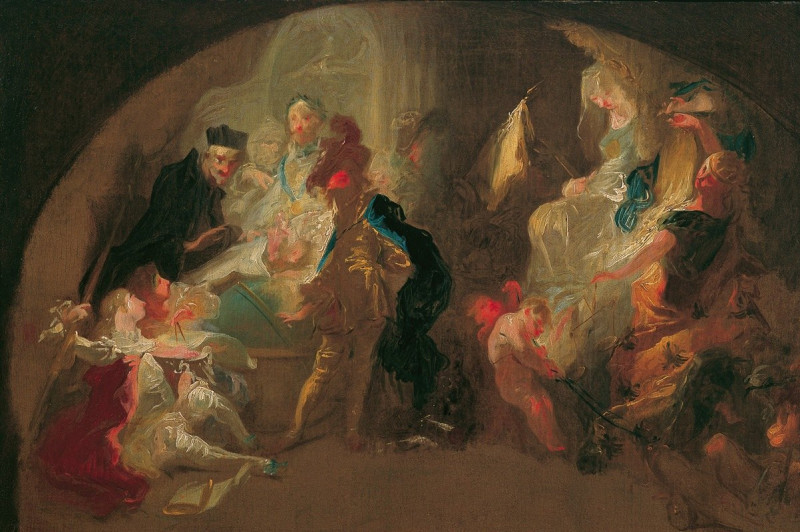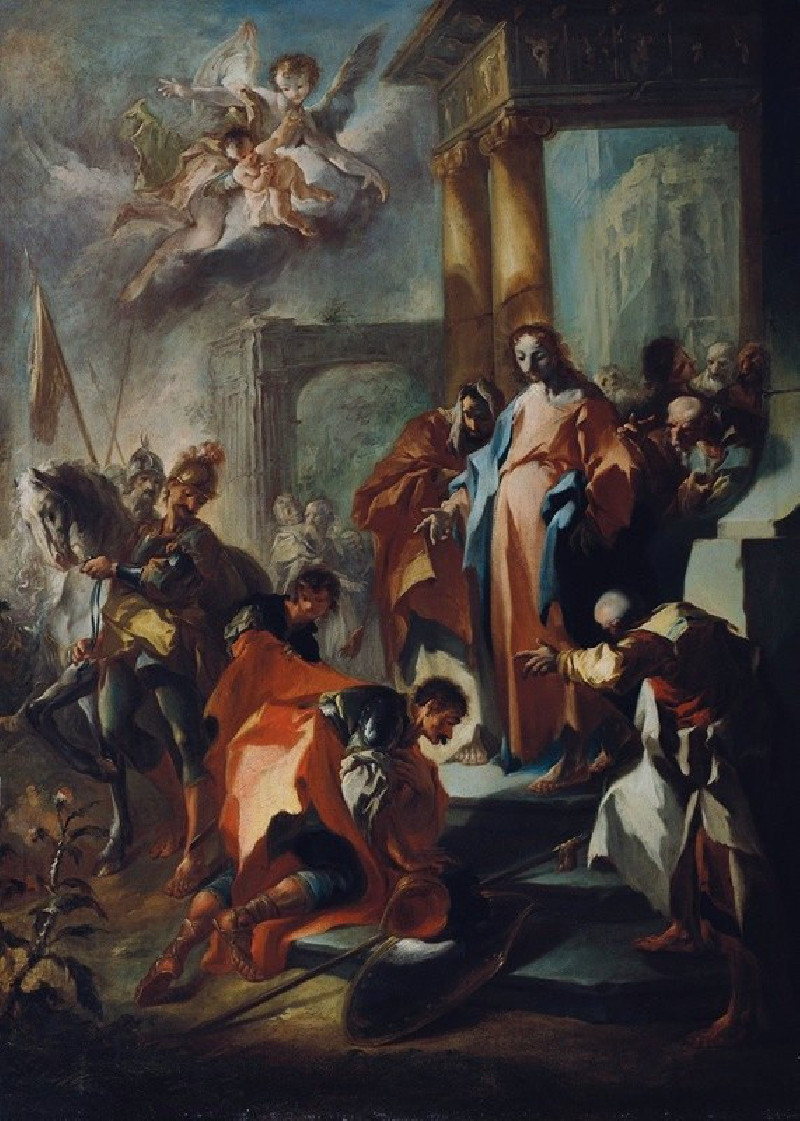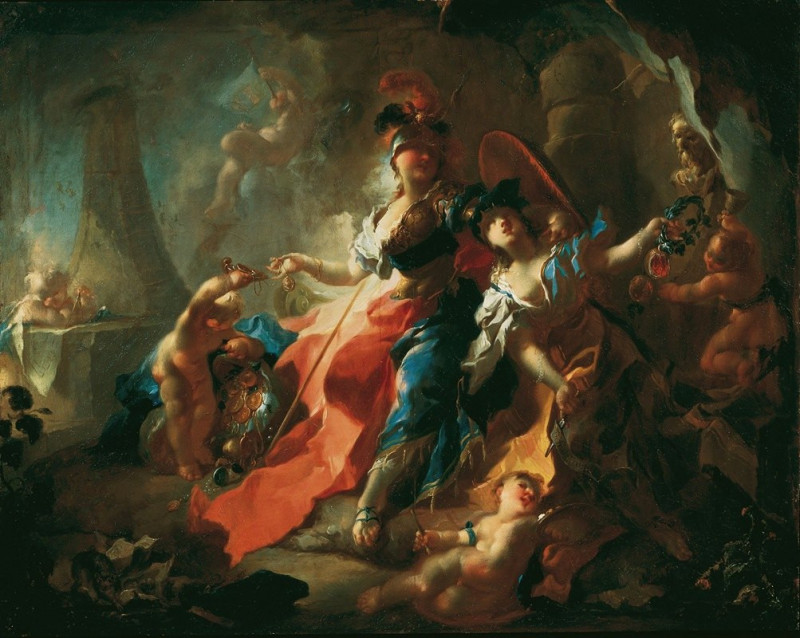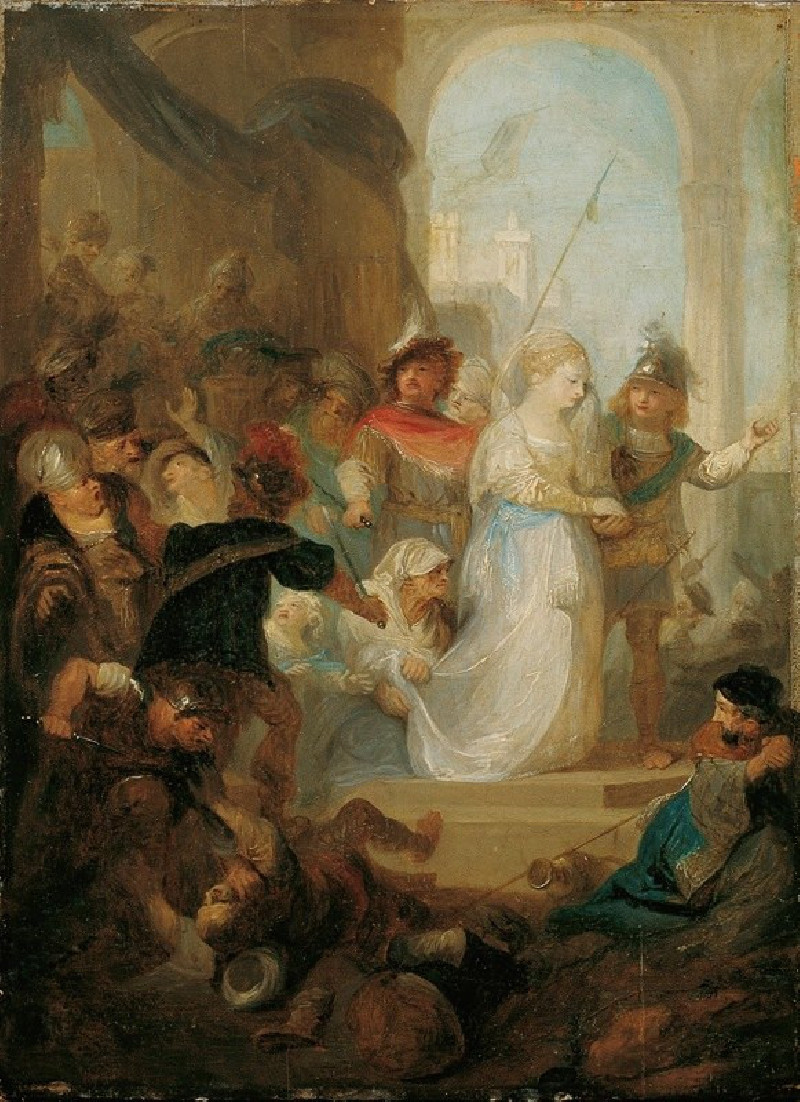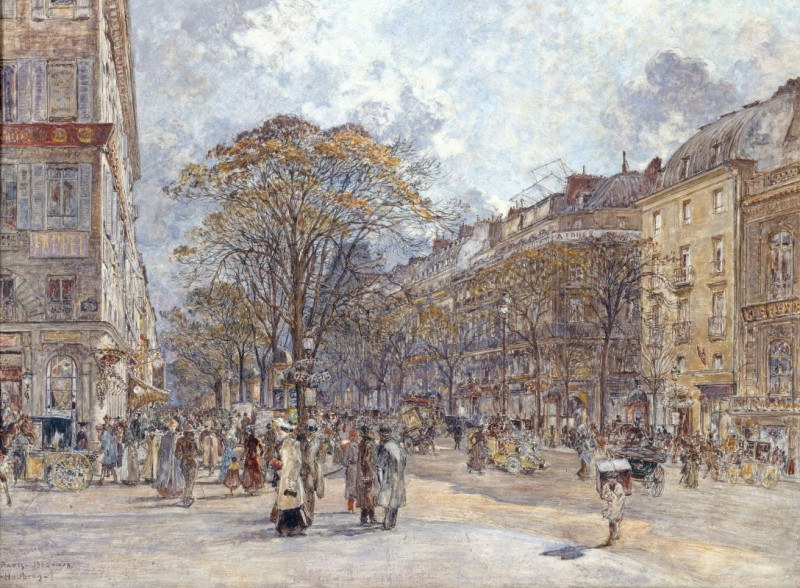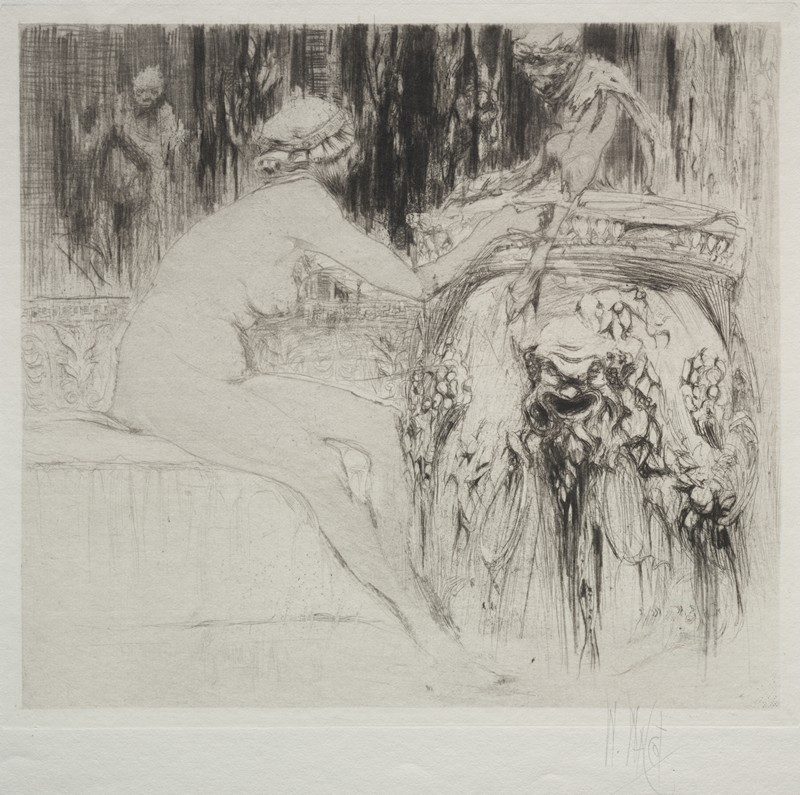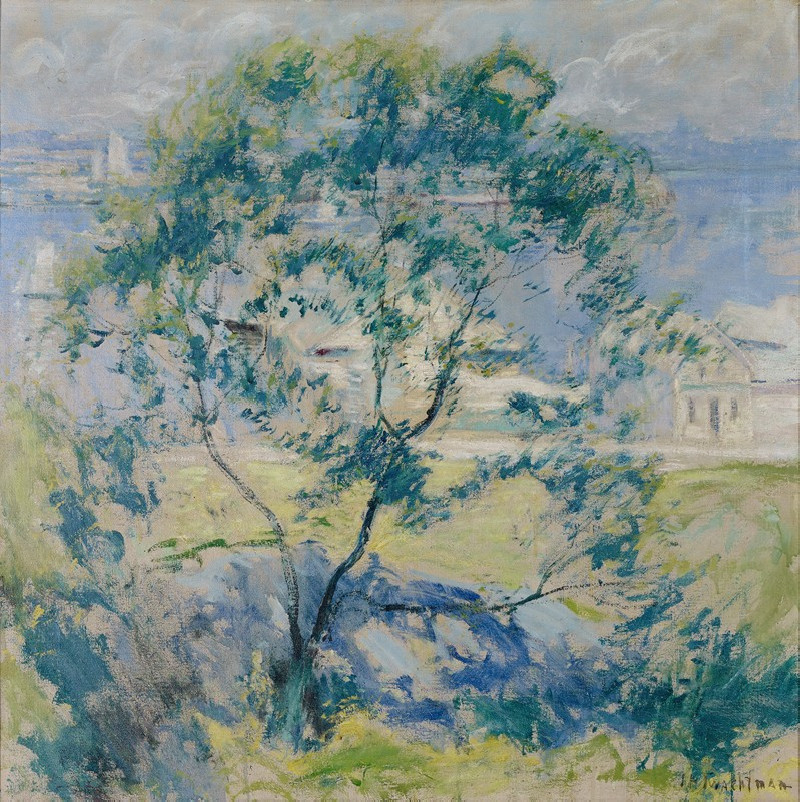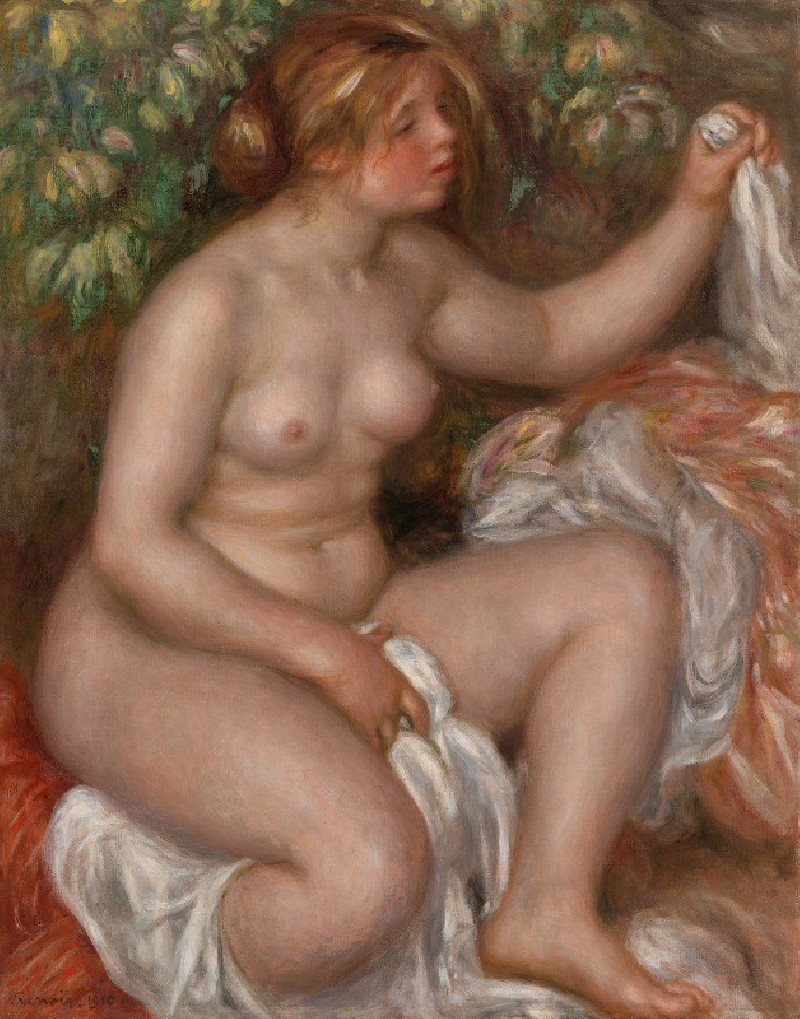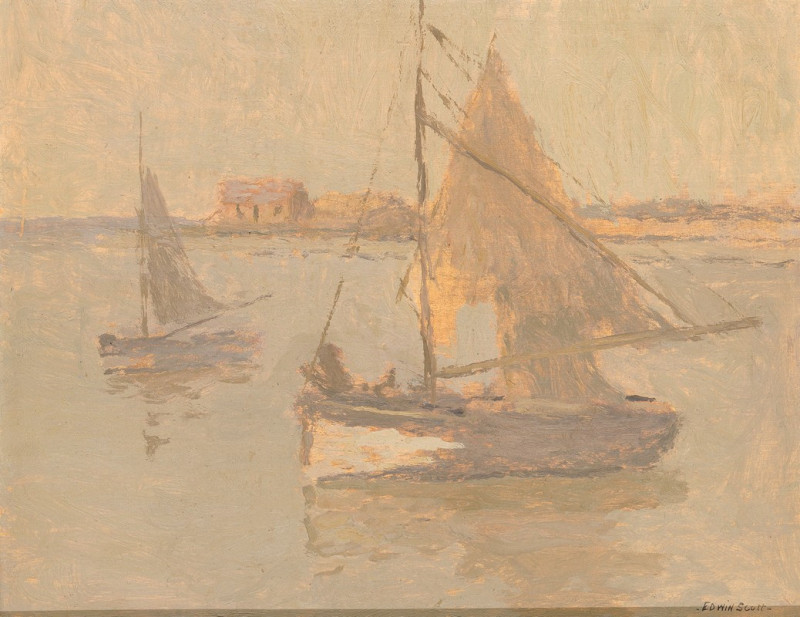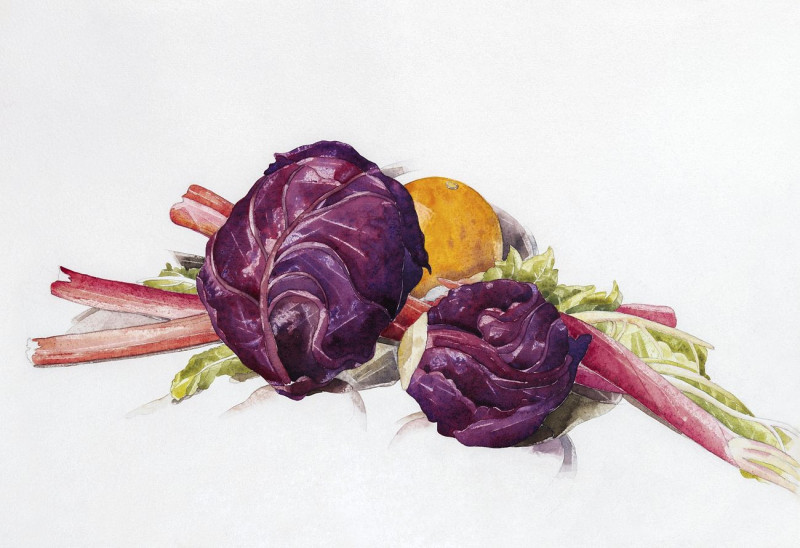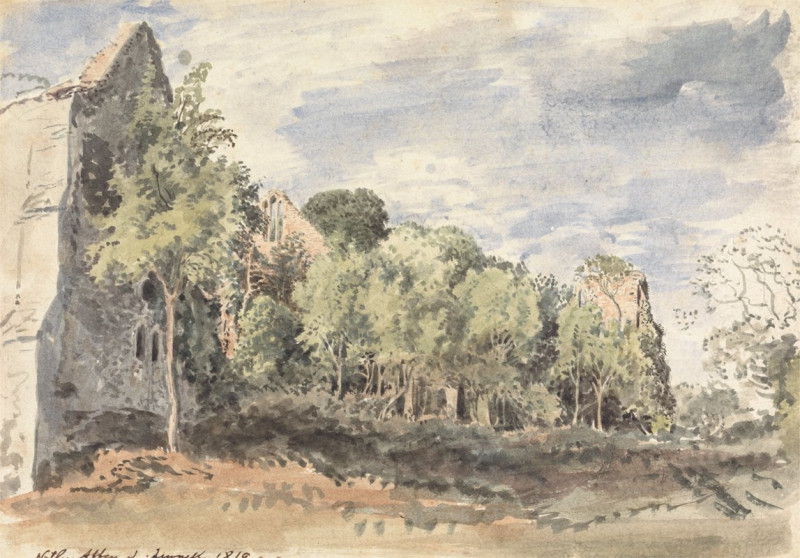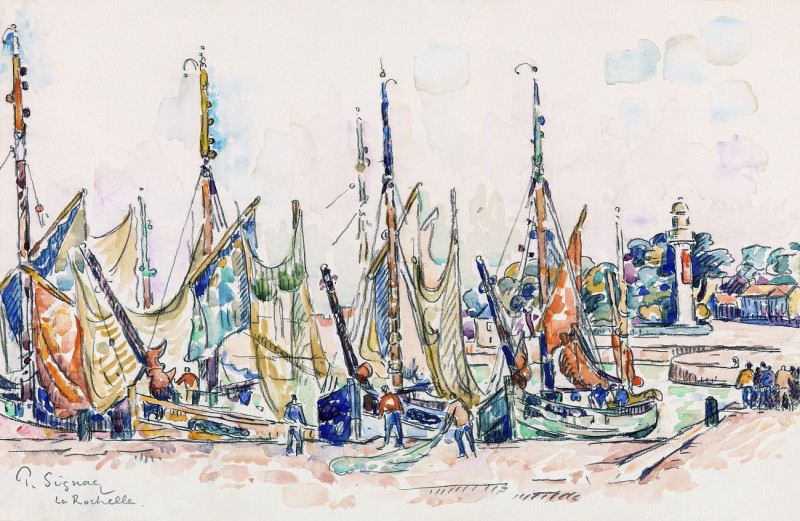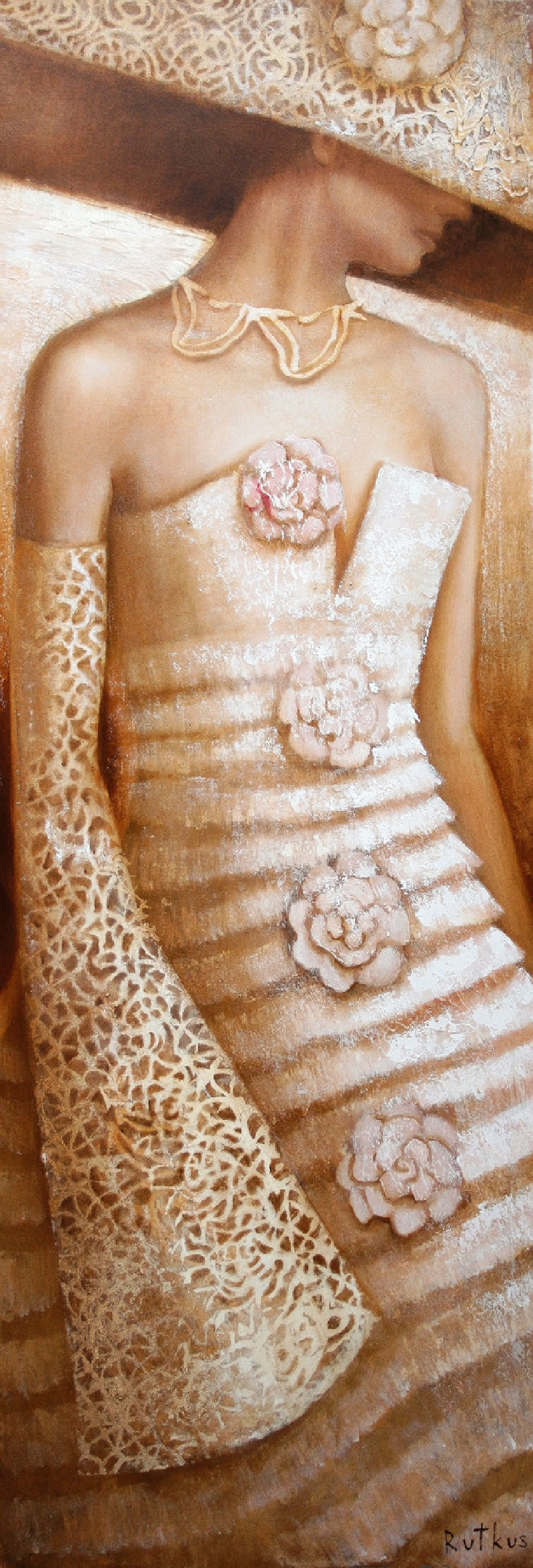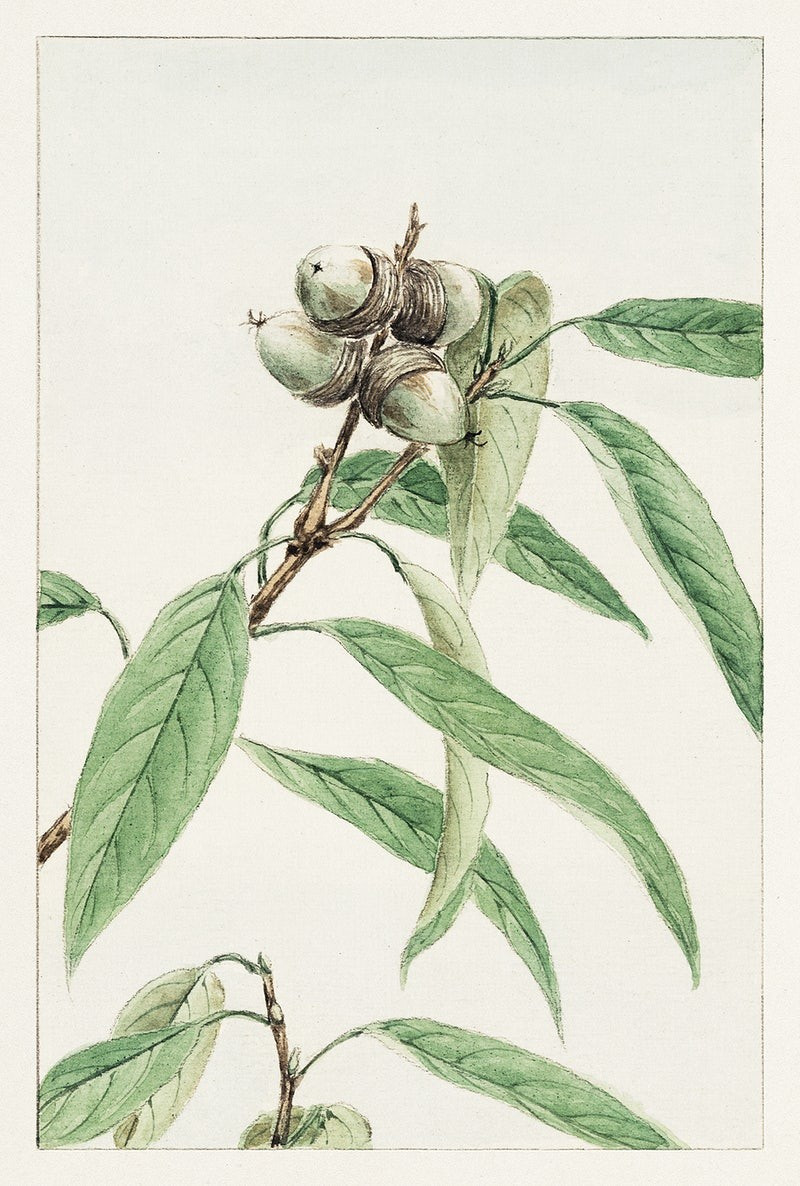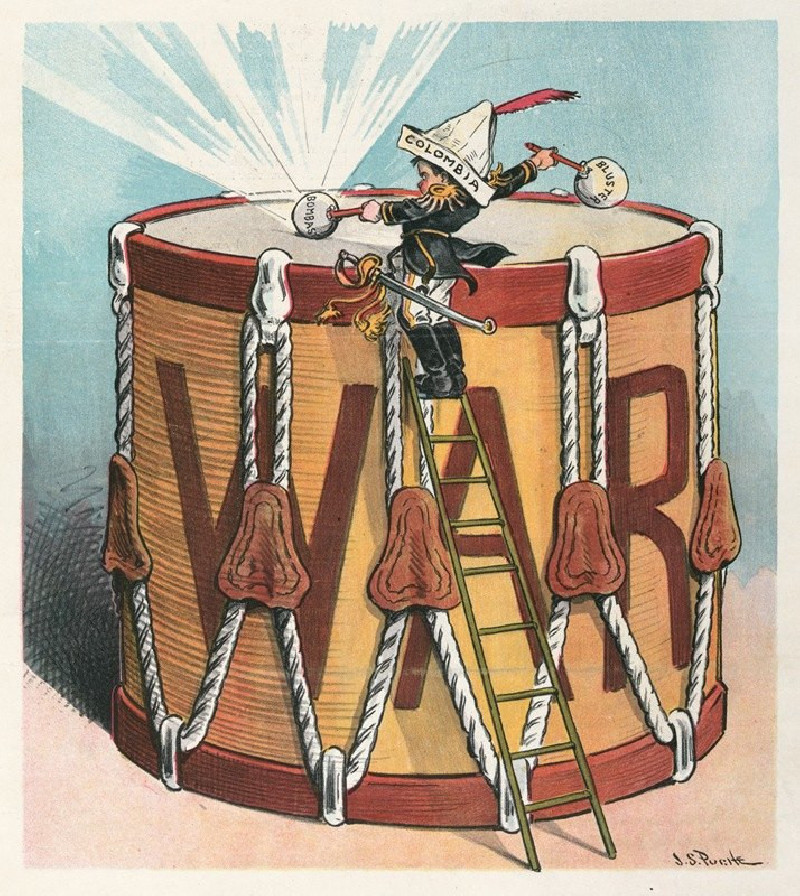Verkündigung an Maria (1766-1767)
Technique: Giclée quality print
Recommended by our customers
More about this artwork
"Verkündigung an Maria" (Annunciation to Mary), painted by the notable Austrian painter Franz Anton Maulbertsch between 1766 and 1767, is a captivating work of art that explores one of the most profound moments in Christian theology. This painting, rich in symbolism and dramatic intensity, illustrates the biblical episode where the Angel Gabriel announces to the Virgin Mary that she will bear the Son of God, Jesus Christ.The composition places Mary in a humble, introspective pose, deeply engrossed in her reading, symbolizing her piety and wisdom. The sudden appearance of Gabriel interrupts her quiet moment. The angel, depicted with vibrant and dynamic energy, gestures towards heaven, indicating divine intervention, while his opulent red and white robes swirl around him, adding a dramatic flair to the celestial announcement.Above, a cluster of cherubs, bathed in a divine light, watch the scene unfold, their presence reinforcing the heavenly sanction of this momentous revelation. The inclusion of these angelic figures adds a layer of spiritual depth and emphasizes the significance of this event not only to Mary but to all of mankind.The use of light and shadow plays a crucial role in this painting, focusing the viewer’s attention on the central figures of Mary and Gabriel. The light not only enhances the ethereal quality of the scene but also symbolizes divine presence and the illumination of spiritual truth.Franz Anton Maulbertsch’s mastery in blending the earthly with the supernatural is evident in this work, making "Verkündigung an Maria" a profound piece of religious art that invites viewers to reflect on the mysteries of faith and the divine plan.
Delivery
Returns
Franz Anton Maulbertsch (June 7 , 1724 - August 8 , 1796 ) was, alongside Martin Johann Schmidt , the most outstanding painter of the Austrian late Baroque . His expressive art initially broke with tradition, ultimately culminating in classicism and completing Austrian Baroque painting in an idiosyncratic and independent way.

